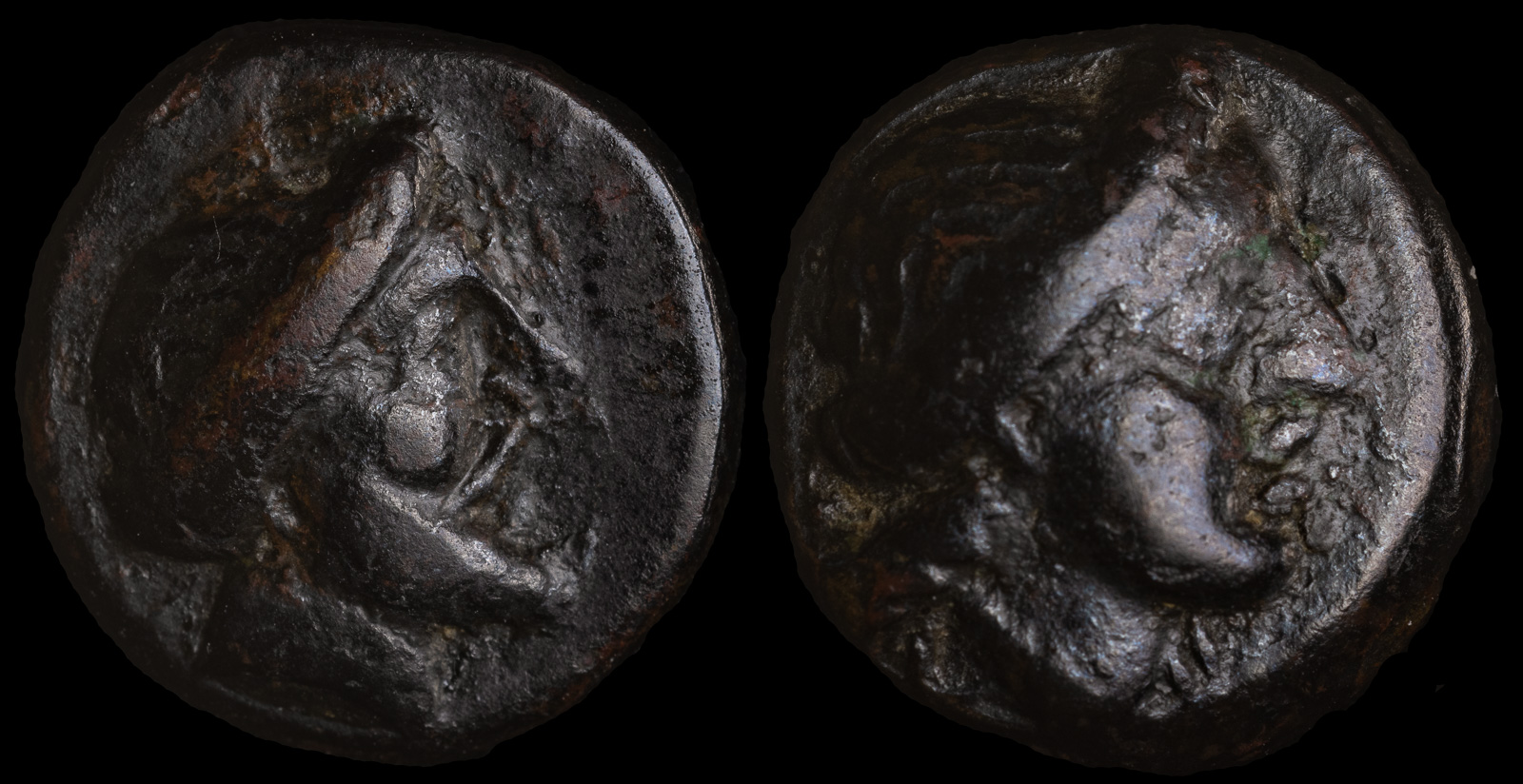
Crete, Knossos
Circa 300-270 BCE
Æ 13.5mm, 3.35 g, 12h
Head of female right /
Head of Zeus right.
Svoronos, Numismatique 80; SNG Copenhagen 371
In some ways, Knossos was to Crete what Athens and Sparta rolled up together were for mainland Greece. The city dominated the island long past Minoan times.
Today, tourists marvel at the ruins of the Palace of Knossos, where legend has it the Minotaur roamed. Many ancient coins of the city boast this with images of the labyrinth, but I don’t have one yet.
While Knossos is most famous as the center of the Minoan civilization, it did not wash away when that kingdom was toppled. Instead, it stayed at the forefront of cities in Crete. When Philip II rose in Macedon, Knossos formed an alliance with him. After Phalaikos fled Phokis during the Sacred Wars, Knossos hired him to oppose one of their chief enemies on Crete in Lyttos, who in turn appealed to Sparta for help.
This coin was likely minted during a period of Macedonian domination and before the Ptolemies and Macedonia sparred in the Chremonidian War, which involved much of Crete. After that war, and its Macedonian victory, Knossos came to dominate nearly the entire island. Only the Polyrrhenians had some success in defying them.
Knossos is first settled.
Construction begins on the Palace of Minos at Knossos.
The Palace of Minos at Knossos is rebuilt on a grander scale at Knossos.
Palace of Minos at Knossos is destroyed.
Knossos begins a resurgence, but the Palace of Minos is not rebuilt.
Knossos takes Lyttos with the help of Phalaikos of Phokis.
Knossos is an ally of Philip II of Macedonia.
Demetrios Poliorketes besieges Rhodes and invents many new siege engines for the purpose (earning him the title ‘besieger’) but he fails and is forced to leave them. Knossos provides troops to support Rhodes.
216 BCE
The Lyttian War is fought between an alliance led by Knossos and one led by Polyrhenion. On the side of Knossos were Rhodes, the Aetolian League, and Kydonia. On the side of Polyrhenion were Lyttos, Macedon, and the Achaian League.
The Roman general Quintus Caecilius Metellus conquers Crete, incorporating it into the Roman Republic. Eleutherna, along with Gortyna, Knossos, and Kydonia, come under Roman rule
Knossos becomes a Roman colony named Colonia Iulia Nobilis.
July 21
An earthquake destroys Aptera, Gortyna, Eleutherna, and Knossos on Crete. Alexandria is devastated by a tsunami, and Kyrene is also affected by the same tsunami. Kydonia is also damaged. In the Peloponnese, Messene is affected.